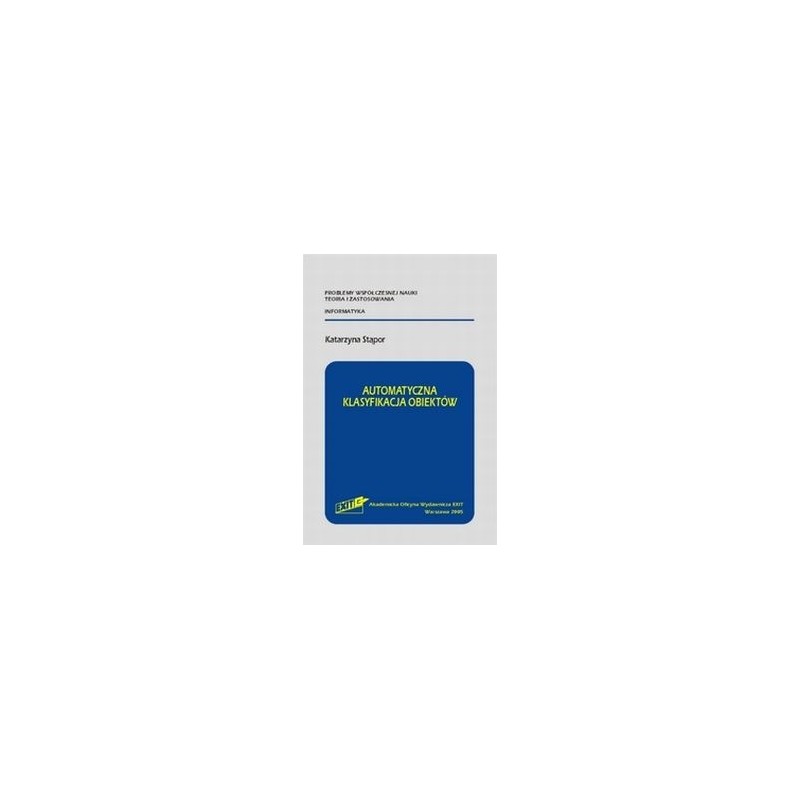- Out-of-Stock



About the book
The book discusses the basic elements of automatic object classification systems. Within the supervised classification, empirical Bayes classifiers and directly defined classifiers are presented, including the supporting vector machine and the multi-layer perceptron. Among the grouping algorithms, selected algorithms of iterative optimization, density and graph algorithms as well as algorithms using neural networks are presented. All discussed algorithms are illustrated with practical examples with the participation of generated learning sets. In addition, applications of classification algorithms in computer vision systems are shown: recognition of geodetic maps and support of the diagnosis of glaucoma in ophthalmology.
The book will be useful to a wide group of readers involved in the design and creation of automatic object recognition systems in various fields, as well as students of the fields of Information Technology, Automation and Robotics and Bioengineering.
No product available!
No product available!
No product available!
Assembled practical workshop power supply. AVT3172 C
No product available!
No product available!
No product available!
POWER METER OF EFFECTIVE AUDIO AMPLIFIER - HARDWARE - PRINTED PLUG AND PROGRAMMED SYSTEM
No product available!
No product available!
No product available!
No product available!
No product available!
Pin strip straight in black, double-breasted, female, 2x17, pitch 2.54mm, THT, RoHS. PBD34S
No product available!
No product available!
No product available!
No product available!
No product available!

